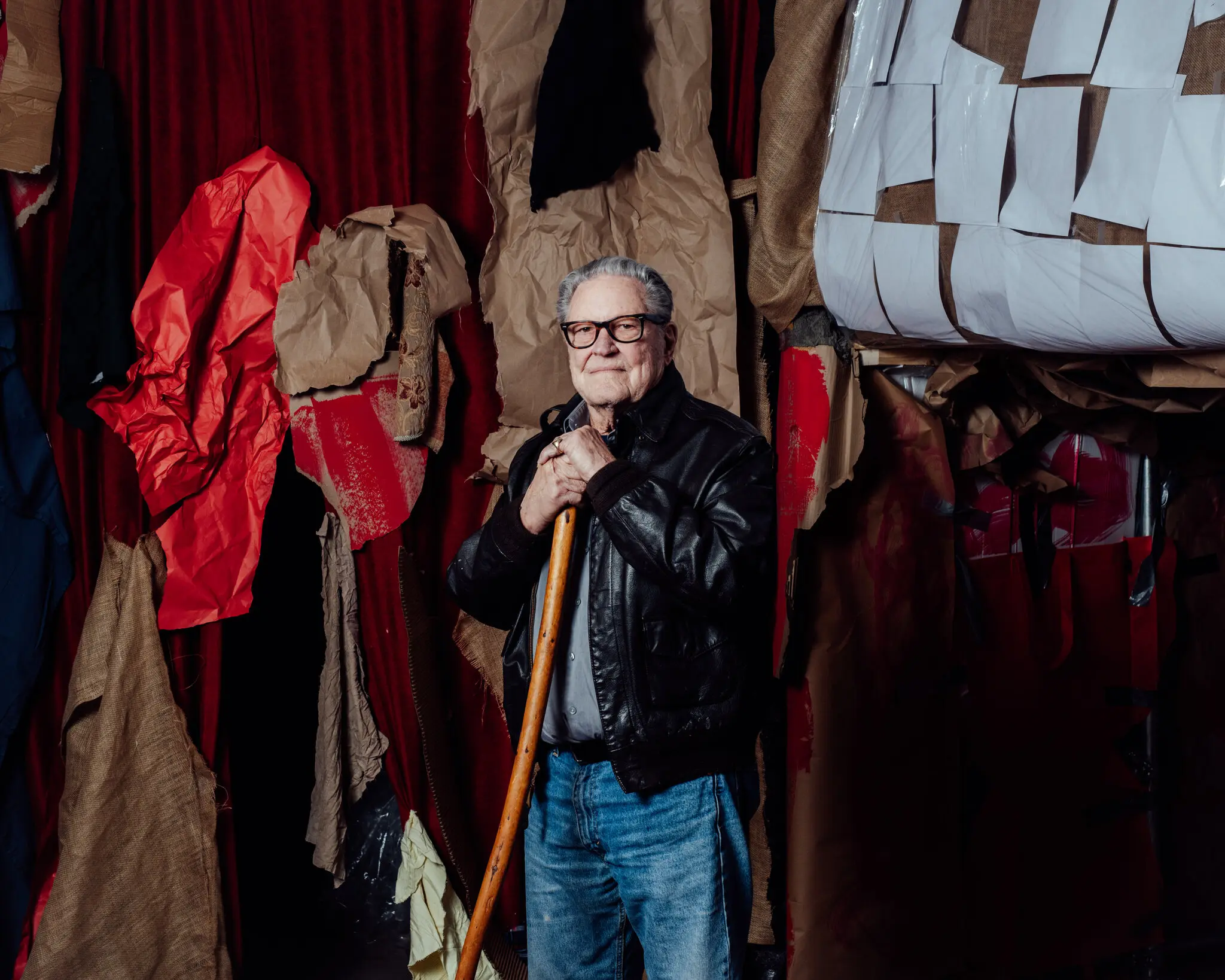
(*And what it will take to make a truly rocking music phone.)
ONE SIGN THAT THE ROKR, the new iTunes phone from Motorola, might not live up to expectations came during its September unveiling ceremony at San Francisco’s Moscone Center. In the midst of an elaborate presentation of new products, Steve Jobs, CEO of Apple, faltered in his onstage demonstration of one of the ROKR’s most crucial features: effortless switching from MP3 player to phone and back again. After taking a call from a colleague, he went back to . . . nothing. Silence. “Well,” he said, looking perplexed, “I’m supposed to be able to resume the music right back to where it was. . . .” Then: “Oops! I hit the wrong button.” Maybe not the ROKR’s fault, but since Jobs’ presentations are usually flawless, certainly not a good omen.
 What should a music phone offer? The specs aren’t hard to figure out. For starters, it should have clearly marked Pause and Play buttons so as not to trip up people like Steve Jobs. It should sync quickly and easily with your computer, and you should be able to use it to buy music at a reasonable price. It should play music from iTunes or any other music service. You should be able to choose different amounts of memory, and whatever you decide on, it shouldn’t be constrained to 100 songs—or any other arbitrary limit.
What should a music phone offer? The specs aren’t hard to figure out. For starters, it should have clearly marked Pause and Play buttons so as not to trip up people like Steve Jobs. It should sync quickly and easily with your computer, and you should be able to use it to buy music at a reasonable price. It should play music from iTunes or any other music service. You should be able to choose different amounts of memory, and whatever you decide on, it shouldn’t be constrained to 100 songs—or any other arbitrary limit.
None of this is difficult. The technology to make a cell phone do double duty as an MP3 player is readily available. Motorola and other companies have been selling phones that play music in Europe and Asia for a couple of years now—handsets with lots of memory and serious audio capabilities. And with the iPod, Apple showed how to turn an ordinary MP3 player into a great one. Put it all together and you get—the ROKR? How does a great idea get this botched?
THE ROKR WAS CONCEIVED in January 2004, shortly after Ed Zander became head of Motorola. As a Silicon Valley venture capitalist and, before that, president of Sun Microsystems, Zander had known Jobs for years. So when Jobs called to congratulate him on his new position, it was only natural to discuss how they might work together.
Each had his reasons. Zander had been hired to jazz up the staid midwestern company, and an association with iPod would provide a much-needed infusion of cool—maybe even more than the upcoming RAZR. For Jobs, a partnership with Motorola was a way of neutralizing a threat to the iPod, which already dominated the US music-player market. Consumers around the world are expected to buy 75 million MP3 players this year, but they’ll purchase nearly 10 times that many mobile phones. If music players become standard in handsets, the iPod could be in trouble. Partnering on a music phone gives Apple a way to enter that market yet protect the iPod. So although the two companies were superficially aligned, in fact their ambitions were diametrically opposed: Motorola dreamed of bringing the iPod to the cell phone-buying masses, while Apple sought to protect the iPod from them.

Steve Jobs introduces the ROKR
Thus conflicted, they set to work. Motorola already had a hardware prototype—the so-called MTV phone, which had launched two years before in association with the music channel in Europe, Asia, and South America. Engineers at Motorola’s handset division in the Chicago suburbs started working with Apple’s applications team in Silicon Valley to adapt the iTunes software. They had to deal with situations iTunes hadn’t been designed for, like how to handle a text message and what to do when a call comes in while music is playing. They logged a lot of airline miles.
The Motorola team soon discovered that working with Apple means making compromises. A key part of the iTunes package, for example, is FairPlay, Apple’s digital rights management software. Ostensibly, DRM exists to benefit the music companies, but it’s an equally handy control mechanism for the tech outfits that develop it—companies like Microsoft, Sony, and Apple. FairPlay would set limits on the new phone: It couldn’t play music from any major online store but iTunes. It couldn’t hold more than 100 songs. “It’s obvious why Apple is doing this,” says Patrick Parodi, head of the Mobile Entertainment Forum, an industry trade group. “They don’t want to cannibalize the iPod.”
Once Apple and Motorola came up with a product, they would need to partner with at least one major wireless operator to get it distributed. This was critical, particularly in the US, where carriers so dominate the distribution channels that only 0.5 percent of handsets are sold independently. Meetings were scheduled with some of the world’s largest carriers—Vodafone, Telefonica, Orange, Cingular. But they were bound to object to the handset Moto and Apple were offering, for any number of reasons.
For a carrier, the whole point of putting music on a cell phone is to make money on data traffic from songs downloaded wirelessly. Carriers also like to make money handling the billing for those downloads. Yet the ROKR puts Apple’s iTunes in charge. The only way to load music onto the phone is to sync it with your computer; to buy new music, you have to access the iTunes store through your computer, bypassing the carrier’s network and billing service. Even worse from the carriers’ point of view, iTunes would compete with the music stores they themselves are setting up. Never mind that iTunes has far more name recognition than a carrier’s brand could ever hope to achieve, and thus would lure new subscribers. For companies that live off their monopoly on spectrum, it’s hard to view competition as good.
Dial Tunes |
A user’s guide to the first generation of music phones, here and overseas. |
 |
Motorola ROKR |
Cost: $250Availability: USWhat it has: iTunes. It’s the only music phone that can sync with Apple’s software. Added bonus: impressive sound without headphones. And like its overseas sibling the E398, it uses a Flash card to store files.What it needs: Better sync speed and song capacity. It takes nearly a minute to transfer one song to the phone from a PC; that adds up to well over an hour if you plan to max out the ROKR. Even worse, Apple’s arbitrary track limit gives you a piddling 100 songs, no matter how much memory you have. |
 |
Motorola E398 |
Cost: $200Availability: Asia, EuropeWhat it has: All the basics. It’s the ROKR minus iTunes, so you get stereo speakers for 3-D surround sound and a built-in memory slot for plenty of storage. Better yet, there’s no song limit.What it needs: iTunes. The E398 can’t sync to Apple’s music site, making it just another music phone. There are too few listening options, and its handset lacks an equalizer to customize audio. |
 |
Nokia N91 |
Cost: $700 (estimated)Availability: Europe, US (early 2006)What it has: A 4-Gbyte hard drive that can store more than 1,000 songs—and a sizable audio control pad that lets you switch tracks, pause, and fast-forward. To transfer song files from a PC, drag and drop. Only the N91 is a real competitor to midsize MP3 players.What it needs: Very little. If this hybrid could download tracks straight from the iTunes Music Store, it would be nearly perfect. |
 |
Sony Ericsson Walkman W800i |
Cost: $500Availability: Asia, Europe, USWhat it has: The best built-in speakers and plenty of memory (34 Mbytes of internal memory, plus a 512-Mbyte mem stick). A handy Play Now button on the screen takes you straight to your music. Plus, you get dedicated side keys for Play, Pause, and Skip Tracks. There’s also an FM tuner.What it needs: A built-in hard drive and a keypad with audio controls. |
 |
Samsung SGH-i300 |
Cost: $700Availability: UKWhat it has: Lots of storage. Its 3-Gbyte hard drive rivals Nokia’s N91. Also, expect big sound without wires—this Windows Mobile smartphone works with Bluetooth stereo headsets. And like the Nokia, the i300 can share its hard drive with PCs via a USB connection.What it needs: Separate controls for music—using the phone’s buttons for selecting and managing tracks is tedious. |
So the ROKR took a while. Its debut was rumored for January, February, then March. The formal unveiling was scheduled for the second week in March at a big consumer electronics show in Germany. Two days before the event, however, Motorola scrapped the announcement after talks “with our carriers,” a spokesperson told the Chicago Tribune at the time: “We decided to wait to announce it when everybody is in sync with it.” A week later, when Zander spoke at a trade show in New Orleans, the story had been refined. The introduction was postponed at Apple’s behest, Zander said, because the ROKR wasn’t ready and Jobs doesn’t believe in launching products before you can buy them. The real reason for the delay, analysts and industry executives say, was that carriers balked at the phone’s limitations.
Jobs declared last May at the D: All Things Digital conference that Apple is “not very good at going through orifices to get to the end users.” No kidding. To anyone who knows the orifice—i.e., carrier—business, the question was why anyone ever thought this phone would fly with them in the first place. “They want their piece,” says Jim Griffin, a digital entertainment consultant for the likes of Nokia and Viacom. “They hadn’t fancied they’d sell a device that lets you go to iTunes without going through their tollbooth.”
The rumor is that one or more carriers told Motorola that if it went ahead with the ROKR, it could forget about selling other phones through their stores. Motorola denies that ever happened, but industry insiders find it awfully plausible. “That’s the story, but nobody will cop to it,” says Ted Cohen, who’s in charge of digital distribution at EMI Music.
“That’s what a mobile operator would say,” says John Ingham, former head of entertainment services at the UK-based carrier O2, which, like Cingular, eventually decided to carry the ROKR. “There’s a lot of money at stake.”
“I’m not surprised,” says Edward Kershaw, head of music at Vodafone, the world’s largest carrier outside of China. Vodafone sells many Moto handsets, but not the ROKR. “To have a handset that prevents the over-the-air element from happening—that doesn’t seem to have the interests of the carriers at heart.”
Motorola’s partner of choice in the US was always Cingular, the biggest of the four major domestic carriers. According to one exec with close ties to Cingular, the product development group was ready to go with the ROKR until a few weeks before the planned launch in March. That’s when the data services group found out about it. People on the data side had their own ambitions for a music service and wanted to think twice before putting out an iTunes phone—especially one that wouldn’t do downloads. Eventually, Cingular concluded that the association with iTunes would be a benefit regardless. Cingular isn’t subsidizing the ROKR’s retail price, as carriers often do—but without its marketing support, the ROKR would have been DOA.
Ron Garriques, the head of Moto’s $17 billion-a-year handset business, was all smiles as he greeted the media after the ROKR’s September launch. Behind him, in a broad corridor in the Moscone Center, the hands-on demonstration area for the ROKR was half as big as the space allocated to the superslim iPod nano, whose debut Jobs presented as the big news of the day. If Garriques noticed the disparity, he didn’t let on. Nor did he admit that Cingular had ever balked at marketing the ROKR. “That is not based on anything that is fact, OK?” he said, his normally impish mug turning briefly pugnacious. “I spend a lot of time talking with the carriers. I have never once had a conversation with a carrier in the US who showed any concern that the early versions of this don’t have over-the-air downloading.” Motorola, he added, expects ROKR sales to match the RAZR, the edgy black number that made Moto cool again.
A couple of weeks later, as the nano gained momentum while the ROKR languished in a netherworld of disappointment, Zander was less inclined to be charitable toward his old friend. “Screw the nano,” he blurted out at a Silicon Valley conference. People are going to want devices that do more than just play music, he insisted. “What the hell does the nano do?”
THE ROKR IS JUST THE START of an onslaught of new music phones and services that will be introduced over the next few months by every major US carrier. At best, these offerings will approach what’s been available in other parts of the world—western Europe, Japan, Korea—for a year or two. European carriers provide not just wireless downloads but artists’ minisites for buying ring tones and concert tickets. In Japan you can read song lyrics onscreen as you sing along, karaoke-style. And you can do all this over 3G networks that deliver a tune in seconds, not minutes—networks the US carriers are only beginning to introduce.
This fall, just as American carriers are launching their first music services, international players like Orange will begin rolling out version 2.0. The new Orange service, developed by the French ring tone pioneer Musiwave, starts with the idea that a wireless handset is a personal radio device; a competing service that Sony is pitching to major carriers proceeds from the same notion. Put the cell phone together with an MP3 player, the thinking goes, and you have a receiver-transmitter that should let you discover new music more efficiently than you ever could with broadcast radio.
In addition to offering song downloads, the Sony service can stream music to your phone, transforming the handset into an ad-free personal radio. But unlike, say, XM satellite radio, it can be trained to stream only music you feel like hearing: Set the mood you want, and if you hear a song you don’t like, push a button and it never plays again. And unlike iTunes, it can predict new music you might enjoy based on genre, or based on subtle classifications like rhythm, beat, and vocal style—the same person might like bluegrass and baroque, after all. “This is not just about putting an iPod on a mobile phone,” says Robert Ashcroft, head of Sony’s European networking division, which developed the new service. “We want to completely change the rules of the game.”
But none of this is likely to take off with consumers in either Europe or the US until two big problems are solved. The first is technical: Individual carriers and handsets use a welter of conflicting file formats and DRM standards that limit what you can do with your music. In Europe, for example, you can send a song to a friend’s phone along with your own text message, and your friend can listen to a sample and perhaps buy the song—but only if you’re both on the same carrier.
Most of the key players—including Motorola, Nokia, Cingular, Sony, and Microsoft (but not Apple)—are trying to sort this stuff out through a consortium, the Open Mobile Alliance. It seeks to implement an open-standard DRM that lets people play music on different devices no matter where it was purchased (as long as it wasn’t iTunes). But the effort is being held hostage by a pool of DRM patent holders that want a sizable cut of the proceeds from any music downloads. Until everyone can agree, incompatibility reigns: “It’s as if your record player plays cylinders and mine plays flat discs,” John Ingham says.
The second problem is price. Mobile downloads in the UK cost the equivalent of $2.75 per track, nearly twice as much as a computer download on Britain’s iTunes store. When over-the-air downloads reach the US in the next few months, they may cost even more. Both music and wireless execs look at the extraordinary sums mobile subscribers have been paying for ring tones and figure people will happily shell out a similar amount for full tracks: Why shouldn’t the whole song be worth as much as a snippet? And now that file-sharing appears to be leveling off, the music labels have been chafing at Apple’s 99-cent US price cap anyway. For mobile downloads, they figure, the ability to make an impulse purchase should command a real premium. “The price associated with iTunes’ launch was really about establishing some traction with consumers where there had been complete failure to show that people would pay any price,” says Michael Nash, a digital strategy executive at Warner Music. “Where you don’t have that artificial price depression, people are willing to pay more to get what they want, when they want.”
This kind of thinking is beyond wishful. “It’s insane,” declares Gilles Babinet, founder of Musiwave. “It’s a load of bollocks,” says Ingham. “They said in focus groups quite bluntly: Price is everything. They don’t care about convenience—they’ll wait till they get home and download.”
The real reason mobile downloads are being priced so high, execs in the business maintain, is that the four global music conglomerates are insisting on the same cut they get from Internet purchases — about 60 percent in the UK, 70 percent in the US. The cost of delivering a song via broadband is negligible, but carriers can spend anywhere from 15 to 60 cents per song to transmit that song wirelessly. If the music label demands 70 percent of the price, US carriers may end up charging as much as $3 per song. Of that, 90 cents would be split between the carrier (for delivering the music and handling the billing) and the company that runs the carrier’s music store and provides the DRM. A whopping $2.10 would go to the music label. “However greedy the music labels want to be, that’s where the price comes in,” says Roger Entner, a wireless analyst at Ovum.
Of course, there are other price points in music: free, for example. Because cell phones have had limited memory and closed, proprietary operating systems, they’ve seemed almost magically immune to the kind of file-sharing the music companies like to call piracy. No one at the labels seems to have figured out that, with the advent of memory-intensive smartphones running open software platforms like Symbian and Windows Mobile, P2P is about to make the leap.
ANSSI VANJOKI, EXECUTIVE VICE PRESIDENT of Nokia and head of its multimedia group, has bad news for the labels. In an impossibly sleek conference room at Nokia’s steel and glass headquarters in Espoo, a woodsy Helsinki suburb, Vanjoki is showing off the new N91, a 3G Symbian handset that will go on sale this winter. As a music phone, the N91 is everything the ROKR is not. It can hold a thousand songs or more. It has a rugged 4-gigabyte hard drive as well as Wi-Fi and a high-speed USB connection. “If you want to do file-sharing, this is also possible,” Vanjoki says. “Because this is not a mobile phone, it is a computer.”
He pushes a couple of buttons on the keypad. Up pops Symella, a new peer-to-peer downloading program from Hungary. As the name suggests, Symella is a Symbian application that runs on Gnutella, the P2P network that hosts desktop file-sharing apps like BearShare and Limewire. It was created earlier this year by two students at a Budapest engineering school that for four years has been exploring mobile P2P in conjunction with a local Nokia research center. Symella doesn’t come installed on the N91; Vanjoki downloaded it from the university Web site. “Now I am connected to a number of peers,” he continues, “and I can just go and search for music or any other files. If I find some music I like and it’s 5 megabytes and I want to download it — the carriers will love this. It will give them a lot of traffic.”
Vanjoki is Nokia’s resident renegade, legendary for having once been slapped with a $103,000 fine for speeding on his Harley (reduced on appeal to $5,200). Though he doesn’t say so outright, the implication of Symella is clear: Music fans will get what they want, whether the labels choose to be reasonable or not. What’s bad for the music companies, however, could be great for the carriers. According to Ellacoya Networks, a network management firm, P2P accounts for nearly two-thirds of the Internet traffic in Europe and as much as 90 percent in some North American college towns. It’s not hard to imagine mobile P2P generating huge increases in wireless data traffic. “I’ve seen many people at carriers’ technical departments using this same software,” Vanjoki volunteers.
Not that the N91 is itself designed to facilitate illicit downloading. To go with the handset, Nokia has set up a mobile music download service—one that’s designed to be as carrier-friendly as possible. Downloads go through the carrier’s network and billing system, and the whole service is intended to be branded as the carrier’s own. Built by Loudeye, the Seattle company that powers MSN’s online music stores in Europe and Australia, it works on any manufacturer’s phones. The one thing it doesn’t do is bring down the price of downloads.
AAARGH! |
Why you don’t yet have the perfect music-playing phone. |
The ideal MP3 phone: |
• switches seamlessly from music player to phone
|
. . . but industry players have their own agendas . . . |
Music labels (EMI, Warner, etc.) want to get more money for wireless downloads than they do for online purchases.Wireless carriers (Sprint, Verizon, etc.) want to make consumers buy songs from their music stores.Handset makers (Nokia, Motorola, etc.) need carriers to help with distribution and marketing costs.Apple wants to protect the iPod from competition by forcing consumers to use iTunes. |
. . . so the results are disappointing. |
Higher prices—as much as $3 per song—for wireless music downloads to your phone.Music phones that can’t play songs purchased from iTunes.Hobbled phones that manufacturers put out just to accommodate carrier demands.Limited capacity (the ROKR holds only 100 songs) and choice of music stores. |

 November 13, 2005
November 13, 2005




